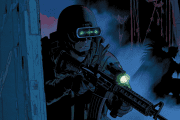Bad Parenting review
I recently stepped into the chaotic, sometimes absurd world of Bad Parenting 1: Mr. Red Face, and from the very first moment, I knew I was in for an experience like no other. Approaching this game as someone looking for a quirky narrative and unexpected twists, I found myself both amused and intrigued as I navigated the offbeat storyline and challenging gameplay elements. The game presents a satirical take on parental responsibilities, wrapped in a visually vibrant and humorously irreverent package. My initial curiosity quickly evolved into a deep appreciation for the creative approach the developers executed.
A Deep Dive into the Narrative
Walking through the storyline of Bad Parenting 1: Mr. Red Face was like entering a bizarre yet familiar frontier. The narrative is a delightful mix of satire and quirky storytelling that kept me thoroughly engaged. I found that the plot does not shy away from addressing the absurdities of modern parental expectations in a society obsessed with perfection. The character of Mr. Red Face embodies a flawed hero whose misadventures are as heart-wrenching as they are humorous. I gravitated towards the narrative voice, which managed to balance genuine emotion with tongue-in-cheek comedy in an intellectually stimulating manner. Throughout this adventure, I was not only entertained but also subtly prompted to reflect on my own experiences and assumptions regarding responsibility and failure in a humorous yet thought-provoking fashion.
The Intricate Art of Gameplay
One of the strongest aspects of my experience was the gameplay design. The way the game blends everyday parenting scenarios with an element of surreal absurdity is nothing short of clever. I found myself tackling puzzles and challenges that were directly related to managing both personal and family chaos, with tasks that felt unconventional yet oddly familiar. The controls were responsive, creating a harmonious balance between frustration and satisfaction, as every challenge motivated me to experiment with different strategies. The mechanics are designed to evoke a mixture of nostalgia and modern innovation, making the operations refreshing while still feeling rooted in classic game design principles.
Visual Aesthetics and Artistic Direction
The visual presentation of Bad Parenting 1: Mr. Red Face captivated my attention from the outset. The game features a unique artistic style that combines hand-drawn graphics with vibrant, exaggerated colors, which perfectly mirrors the game’s playful yet satirical tone. As I traveled through various environments—each distinct yet interconnected—I immediately noticed the attention to detail and craftsmanship in the design. The characters are rendered with an impressive range of expressions, adding depth to their personalities, while the backdrops oscillate between the mundane and the surreal, reinforcing the thematic core of the narrative. Every visual element was crafted in a way that enhanced the overall experience, making the game as much a piece of art as a form of interactive entertainment.
Immersive Soundscapes and Musical Score
The sound design and musical score played a fundamental role in intensifying my immersive experience. The background music is a mix of playful tunes and somber melodies that perfectly complement the shifting moods in the game. Whether I was navigating a challenging puzzle or wandering through a particularly chaotic level, the soundtrack always seemed to adapt to the atmosphere, enhancing the emotional resonance of each moment. The sound effects, from the subtle ambient noises in a quiet suburb to the exaggerated sounds that underscore moments of tension, further anchored me in the game’s unpredictable world. This auditory journey encouraged me to appreciate the seamless integration of both sound and gameplay design.
Character Development and Personal Connection
In my exploration of the game, I found that the characters, especially Mr. Red Face, were crafted with a distinct personality that resonated deeply. As the central figure, Mr. Red Face embodies a blend of vulnerability and resilience that made it impossible not to empathize with his struggles. I appreciated how his flaws were not merely thrown into the narrative as comic relief, but were interwoven intricately with his personal growth. The interactions with other characters provided layers of complexity, challenging my preconceived notions about role models and caregiving. I felt a strong personal connection to these characters, as they navigated a labyrinth of responsibilities, missteps, and ultimately, the realization that imperfection is part of the human experience.
Fluid Controls and Game Mechanics
The user interface and control scheme of Bad Parenting 1: Mr. Red Face significantly enhanced my gameplay. Every mechanic, from puzzle-solving to character interaction, was meticulously designed to ensure that the progression felt both natural and rewarding. The controls are intuitive enough even for those who are not seasoned gamers, yet robust enough to invite a mastery of the deeper intricacies as the game advanced. I particularly noted the balance between simplicity and complexity, where the learning curve provided just the right level of challenge to keep me engaged without feeling overwhelmed. This aspect of the design greatly contributed to my overall enjoyment, as it allowed me to focus on the narrative and visual storytelling without being bogged down by frustrating control issues.
Exploring the Environment and Level Design
Every level within Bad Parenting 1: Mr. Red Face has its own unique environment, and I found these settings to be rich with detail and imaginative design choices. The variety of locations—from suburban landscapes to dynamic, surreal environments—kept the gameplay fresh and exciting throughout my experience. As I moved through different levels, I was constantly surprised by the clever integration of platforming elements, hidden secrets, and interactive objects that encouraged exploration. Each level posed its own set of challenges and opportunities for discovery, inviting me to revisit and re-evaluate my approach to problem-solving. The carefully constructed layouts not only enhanced the gameplay mechanics but also served as a narrative tool, reinforcing the themes of chaos and order in a world where rules are both defined and rewritten on the fly.
Light-Hearted Humor and Satirical Undertones
One of the most captivating elements during my playthrough was the game’s ability to blend humor with its more serious themes. The dialogue is peppered with witty remarks and tongue-in-cheek humor that never felt forced, and there was a playful self-awareness in every interaction. I found that the humor served as a clever critique of modern parenting ideals and societal narratives. As I progressed, I encountered scenarios that were both absurdly comical and deeply reflective of societal pressures, prompting occasional bursts of laughter and introspection in equal measure. The satirical tone, intertwined with the more heartfelt moments, provided a refreshing contrast that kept the story balanced and engaging. This ability to oscillate between levity and gravity made each moment memorable and added layers of enjoyment to the gameplay experience.
Innovative Interaction Systems
The developers of Bad Parenting 1: Mr. Red Face implemented an array of innovative interaction systems that truly set the game apart from its peers. I was particularly impressed by the way these systems allowed for multiple pathways of engagement within the same scenario. For instance, communicating with another character could lead to a range of outcomes depending on how I approached the conversation. The game does not adhere strictly to a binary option system; instead, it challenges you to consider the consequences of each interaction thoroughly. This dynamic approach to dialogue and decision-making kept me actively thinking about each choice I made, ensuring that the experience felt personal and consequential. I appreciated the flexibility and depth of these systems, which not only expanded the narrative possibilities but also enhanced the overall gameplay experience by making each decision matter.
Dynamic Difficulty and Replay Experience
What struck me most during my repeated playthroughs was the dynamic difficulty adjustment system embedded within Bad Parenting 1: Mr. Red Face. The game appears to recognize the diversity in gaming skill and adjusts scenarios to maintain a balanced yet challenging experience. Having a flexible difficulty system meant that I could approach the game from multiple angles without facing the risk of becoming either too frustrated or too complacent. This adaptability allowed for a rich replay value, encouraging me to invest more time into exploring alternative strategies, hidden storylines, and secret challenges that were not apparent during my initial run. The game rewards experimentation and creativity, ensuring that every replay can be a fresh adventure that presents new puzzles and unexpected narrative twists.
Personal Reflections on the Experience
Throughout my journey with Bad Parenting 1: Mr. Red Face, I encountered a series of moments that challenged my perspective on responsibility, failure, and humor. As the game unfolded, it revealed an unexpected depth beneath its surface of humor and whimsy. I found myself reflecting on my own personal experiences and the inherent imperfections that define the human condition. There were moments when I laughed at the ludicrous scenarios, and other moments when the underlying commentary resonated with me on a deeply personal level. The character arcs and their development provided a narrative mirror through which I could examine my own weaknesses and strengths. Ultimately, the game offered an adventure that was as emotionally engaging as it was entertaining, leaving a lasting impression that extended far beyond the screen.
A Glimpse into the Future of Interactive Storytelling
What keeps me returning to Bad Parenting 1: Mr. Red Face is its fearless approach to interactive storytelling. The game blurs the lines between gameplay and narrative in a way that invites players to explore themes of imperfection, humor, and the chaos of modern life. I appreciated that the developers took risks by combining elements from traditional gaming with innovative storytelling techniques. This blend of narrative and interaction not only elevated the gaming experience but also set a precedent for future titles that wish to explore complex social themes in a playful context. The innovative storytelling methods and the willingness to break conventional boundaries left me eagerly anticipating what future installments might offer and how they might further evolve this unique blend of art and interactive media.
Latest Posts
-
![Black Friday 2025 PlayStation 5 Buyer’s Guide: Expected Prices, Bundles, and Best Time to Upgrade]() Black Friday 2025 PlayStation 5 Buyer’s Guide: Expected Prices, Bundles, and Best Time to Upgrade
Black Friday 2025 PlayStation 5 Buyer’s Guide: Expected Prices, Bundles, and Best Time to Upgrade
- 01 Dec 2025
-
![Helldivers 2 Python Commandos Warbond: Global Launch and What You Should Do Before It Drops]() Helldivers 2 Python Commandos Warbond: Global Launch and What You Should Do Before It Drops
Helldivers 2 Python Commandos Warbond: Global Launch and What You Should Do Before It Drops
- 01 Dec 2025
-
![Why The Witcher 4 Is Quietly Marching Toward a 2027 Release]() Why The Witcher 4 Is Quietly Marching Toward a 2027 Release
Why The Witcher 4 Is Quietly Marching Toward a 2027 Release
- 01 Dec 2025
-
![Fortnite Super Guide 2025: Elite Strategy for Build and Zero Build]() Fortnite Super Guide 2025: Elite Strategy for Build and Zero Build
Fortnite Super Guide 2025: Elite Strategy for Build and Zero Build
- 17 Nov 2025
-
![Call of Duty’s next Black Ops nods to DC’s fear maestro in style]() Call of Duty’s next Black Ops nods to DC’s fear maestro in style
Call of Duty’s next Black Ops nods to DC’s fear maestro in style
- 17 Nov 2025
-
![Medieval co-op chaos: an Overcooked-style hit starring kitchen rats]() Medieval co-op chaos: an Overcooked-style hit starring kitchen rats
Medieval co-op chaos: an Overcooked-style hit starring kitchen rats
- 17 Nov 2025














Leave a comment
Your comment is awaiting moderation. We save your draft here
0 Comments